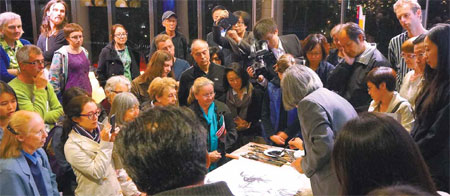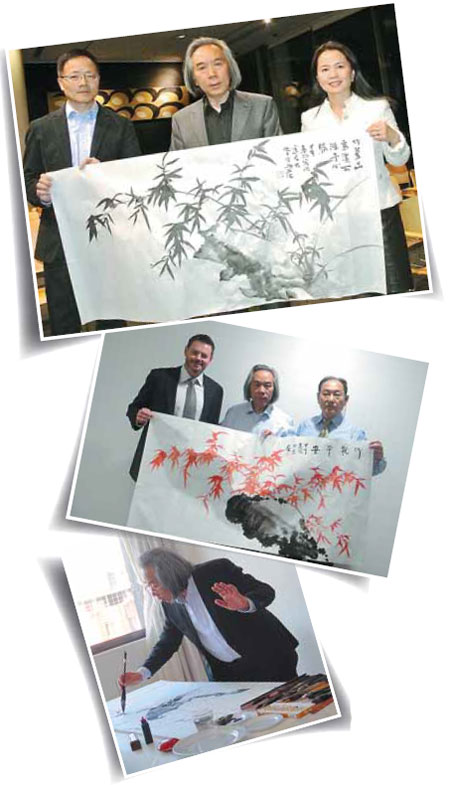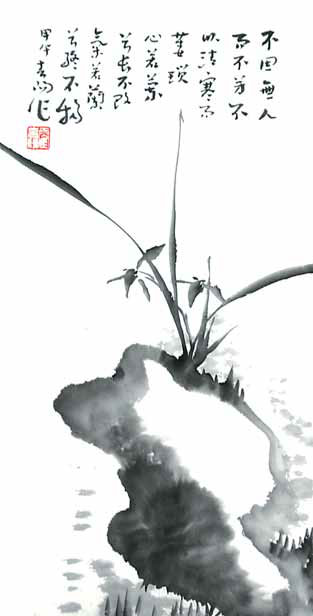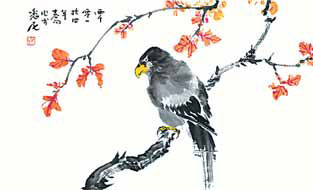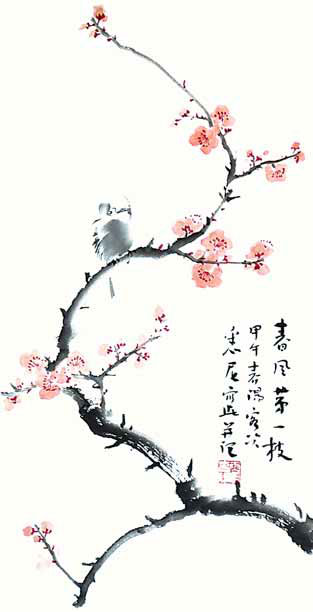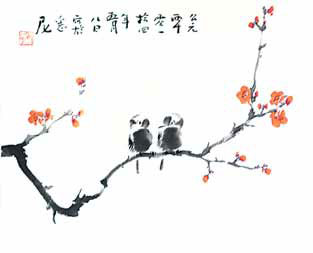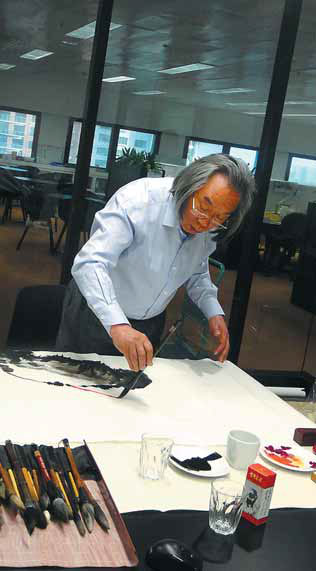Art of enlightenment
Updated: 2014-06-08 07:32
By Wang Hui (China Daily)
|
|||||||||||
Taoism, Buddhism, the I-Ching and Confucius have helped shape Huo Chunyang's creative vision, Wang Hui reports.
As dusk settled in on the night of May 6, a lecture hall at the University of Sydney was full with an audience eager for insight.
To the surprise of organizers, 70 people, mostly Westerners, had showed up for a lecture on traditional Chinese painting.
The star of the night, Professor Huo Chunyang, was invited by the University of Sydney Confucius Institute to give a public talk on his understanding and practice of traditional Chinese painting.
He talked about the philosophies that inspired Chinese artists from generation to generation since ancient times, and demonstrated to the audience the gracefulness and delicacy of flower and bird painting in freehand brushwork.
The audience gathered around him with great interest as Huo painted rocks, orchids and bamboo on a piece of high-quality rice paper.
It was considered a tour de force by a master who has devoted more than four decades to painting flowers and birds.
Portrait of artist
The head of the Department of Traditional Chinese Painting at the Tianjin Academy of Fine Arts, Huo also supervises doctoral students at the Chinese National Academy of Arts in Beijing.
Born in 1946 in Qingyuan county, Hebei province, the renowned painter graduated from the Tianjin Academy of Fine Arts in 1969 and has been teaching traditional Chinese painting there ever since.
Among his many titles is vice-chairman of Tianjin Artists Association.
In 1997, he was selected as one of the top 100 Chinese painters by the China Federation of Literary and Art Circles.
In recent years, Huo has been recognized as one of the country's best painters with traditional freehand brushwork that depicts flowers and birds.
His works portray the dreams of childhood, the magic of nature and the beauty of life.
Huo's works are displayed at celebrated museums and galleries in China including the Great Hall of the People, the Chinese Art Gallery and Diaoyutai National Guesthouse.
For years, he has been closely concentrating on the traditional Chinese philosophies : Taoism and Buddhism as well as the I-Ching, or Book of Changes.
He also absorbed a great deal from the Analects of Confucius during his career as a painter.
All these helped shape his understanding of traditional Chinese culture.
That night in Sydney, Huo poured out his distilled understanding of Chinese philosophies that he believes are still relevant to the cultivation of a great painter today.
Profound philosophies
During his lecture at the University of Sydney, Huo spent a great deal of time explaining the connection between traditional Chinese philosophies and traditional painting.
"It has been a lifelong pursuit as well as a difficult process for me to understand the cream of Chinese art," he said.
"Though traditional Chinese art has felt the constant impact of Western culture, in China today some people like me still cling to it."
The road to traditional art is a combination of the artist's personal experience and continuous perfection of art, Huo said.
"Without life experience, the understanding of Chinese art will be incomplete, fragmental. "
The ancient Chinese believed that the virtue of a painting reflects the virtue of the artist, which Huo said is a major difference between Western art and traditional Chinese art.
"It is important that the artist follows the law of nature while pursuing artistic perfection," Huo said.
He stressed the need for a peaceful mind as the ancients believed tranquility could nurture wisdom.
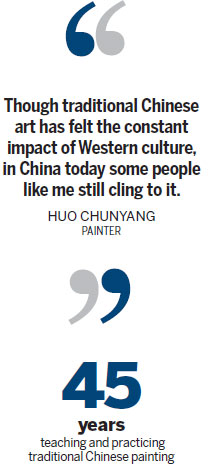
To him, philosophies that have been handed down from generation to generation are still relevant today and should continue to inspire artists in modern times.
"I think art is closely related to people's behavior as well as their conception of the world. We should see a successful painting by knowing where the result comes from," he said.
Huo believes that artists should do their best to cultivate a noble heart and refrain from grasping after either fame or wealth. "I prefer leading a life as simple as a chrysanthemum," Huo said.
The chrysanthemum is one of the four gentlemen lauded by literati in ancient times. The other three are the plum blossom, the orchid and bamboo.
Feedback
Even organizers were surprised by the Australian audience's response to Huo's long talks about ancient Chinese philosophy.
"The lecture was a great success and the audience enjoyed the talk and demonstration very much, " said Xing Jin, director of the University of Sydney Confucius Institute. "They commented that it was an incredible experience for them, and that they gained lovely insight into the world of Chinese art and culture.
"They really appreciated that Professor Huo spoke with such passion and belief about traditional Chinese culture and his desire to contribute to a democratic and civilized cultural power to realize the Chinese dream.
They said they believe the value system Huo talked about is important for Australian society as well.
"Professor Huo's lecture also embodies his efforts to promote traditional Chinese culture and enhance people-to-people exchanges between China and Australia," Jin said.
Australian Mark Armour thanked Huo for being "a wonderful communicator of the Chinese cultural spirit".
Diane Geach, another in the audience, said she understands what Huo was trying to convey to the public.
"In order to enjoy a purity of spirit and have a greater appreciation of art, we should cherish our natural world," she said.
Huo said he is satisfied that his trip to Australia served as a bridge between and facilitated mutual understanding.
"I am pleased to see that both academics and ordinary Australians show a great interest in Chinese culture, and this could serve as the foundation for people-to-people exchanges between the two countries," Huo said.
Contact the writer at wanghui@chinadaily.com.cn
|
Huo shows his freehand brushwork to the audience at the University of Sydney. Photos Provided to China Daily |
|
Two legends: Huo at the iconic Syndey Opera House. |
|
From top: Huo shows his black bamboo work with Xing Jin (right), director of the University of Sydney Confucius Institute, and Yan Feng, her deputy. Huo holds a red bamboo painting with Geoff Withycombe (left), executive officer of the Sydney Coastal Council, and Kent Gao, director of the Association of Australia- China Small & Medium Enterprises. Huo paints an Australian parrot for the first time. |
|
A Solitary Bird on A High Bough |
|
A Lonely Orchid Indulging in Self-Admiration |
|
An Australian Parrot |
|
The First Breeze of Spring |
|
Signature Birds |
|
Huo paints red bamboo at the Sydney Coastal Council. |
(China Daily 06/08/2014 page6)
Today's Top News
Vets flock to Normandy to remember D-Day
G7 'deeply concerned' about S China Sea tensions
Ukraine tightens control on border
Silk Road offers Sino-Arab blueprint
Clinton 'loves to see' female leader
US says to work with Egypt's president-elect
Oversight of military firms on rise in China
Abbott aiming to mend ties with Jakarta
Hot Topics
Lunar probe , China growth forecasts, Emission rules get tougher, China seen through 'colored lens', International board,
Editor's Picks

|

|

|
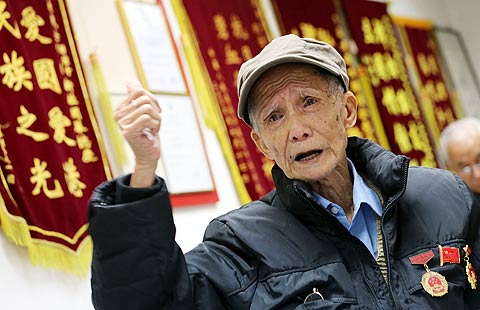
|

|
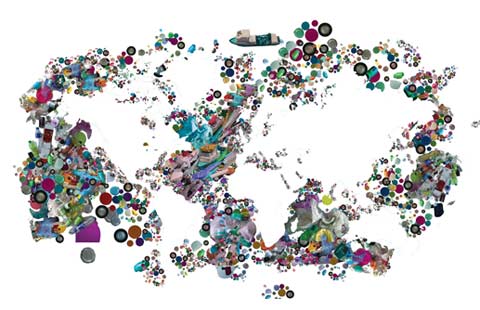
|
